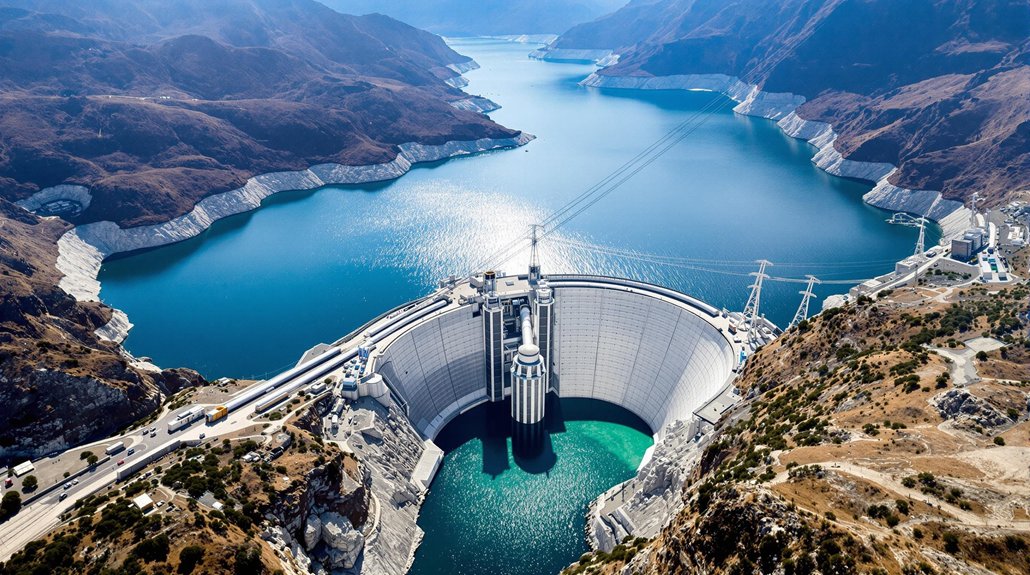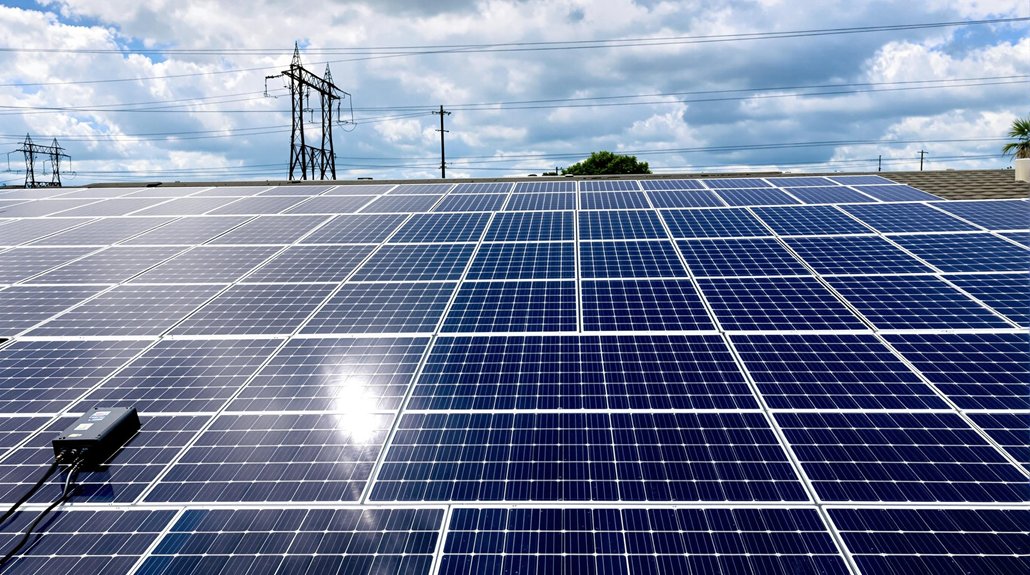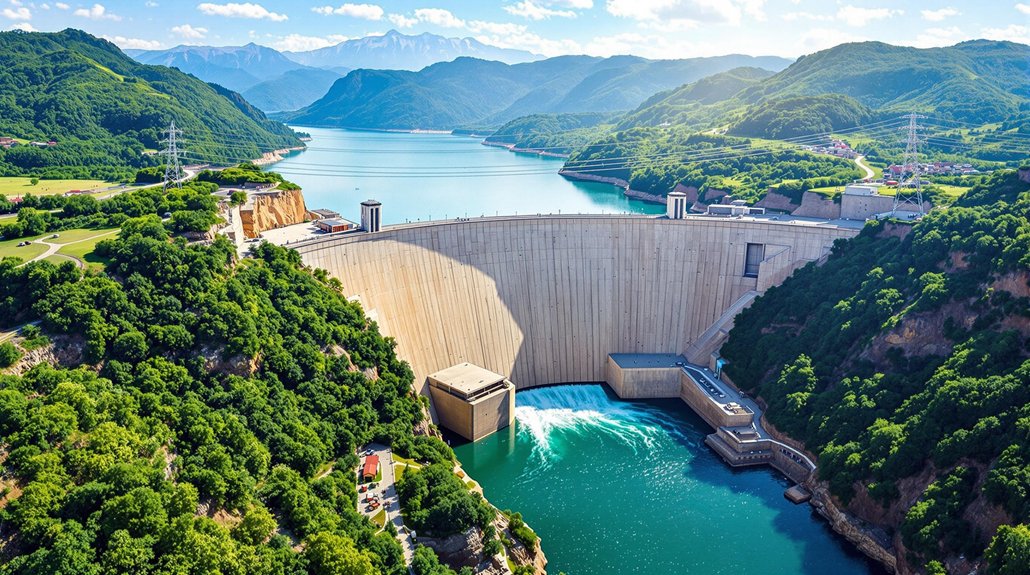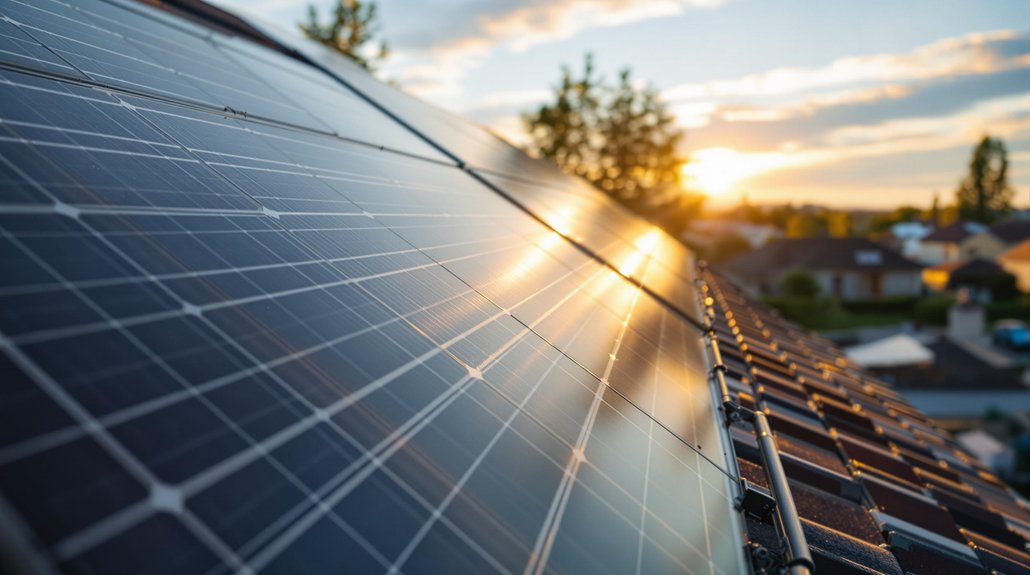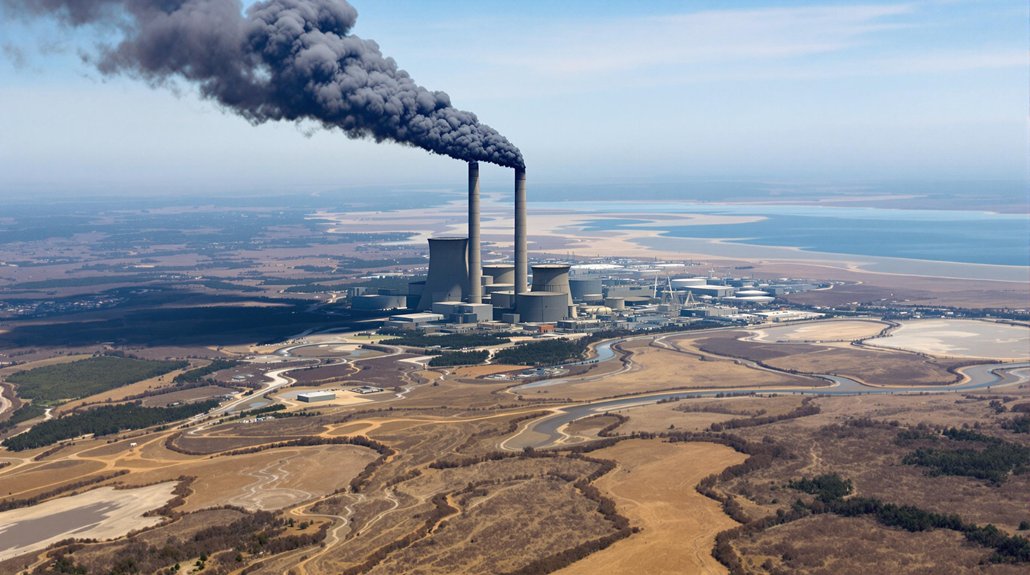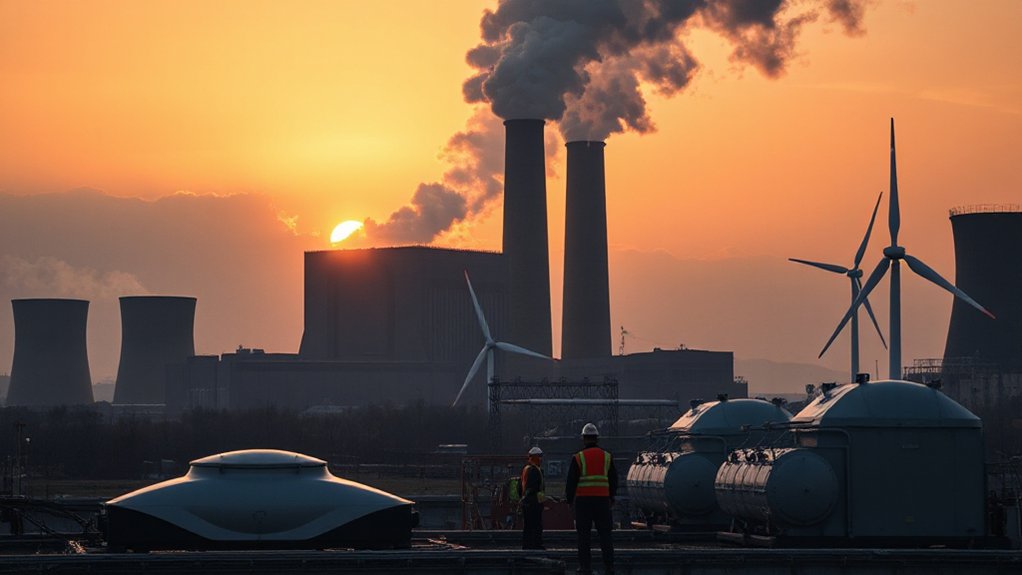Pumped hydro storage functions like a giant battery for the electrical grid. It works by moving water between two reservoirs at different heights. During low-demand periods, excess electricity pumps water uphill. When demand increases, water flows downhill through turbines to generate power. With 80-85% efficiency and the ability to provide power for 6-20 hours, this technology offers essential grid stability as renewable energy expands. The system’s century-long lifespan makes it a durable energy solution.
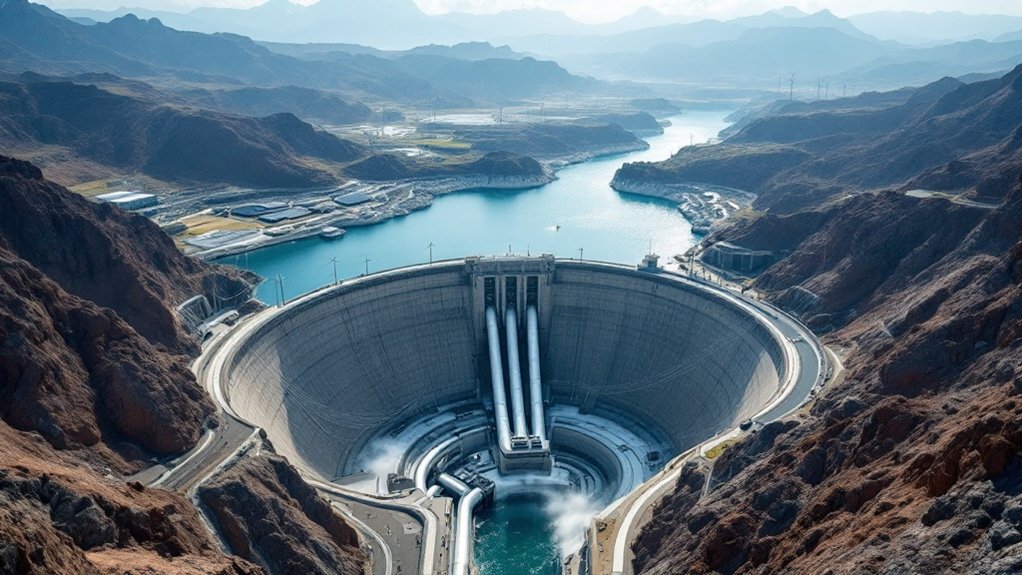
As the world shifts toward renewable energy sources, pumped hydro storage has emerged as a key technology for keeping the power grid stable. This proven system works by moving water between two reservoirs at different heights. During times when electricity demand is low, water gets pumped to the upper reservoir. When demand rises, the water flows back down through turbines, generating power when it’s needed most.
The United States currently has 22 gigawatts of pumped hydro capacity, accounting for 96% of all utility-scale energy storage. These systems are remarkably efficient, returning 80-85% of the energy used to pump the water uphill. The technology greatly contributes to grid stability by providing high inertia that traditional power plants used to offer. A typical facility can provide power for 6-20 hours and store hundreds to thousands of megawatt-hours of energy.
America’s 22 GW pumped hydro fleet delivers 96% of utility storage with 80-85% efficiency, providing power for 6-20 hours.
Pumped hydro offers several grid services that help keep our electricity reliable. It balances loads during peak demand, regulates frequency, provides voltage support, and offers black start capability to restore power after outages. These plants can respond within seconds or minutes to changing grid needs. The system helps prevent energy curtailment when renewable sources produce excess electricity that would otherwise go to waste.
Compared to other storage technologies, pumped hydro excels at long-duration storage of 8+ hours. It’s a mature technology with facilities that can last over 100 years. While the upfront costs are high—typically $1-3 billion—the operational costs remain low over the system’s long lifespan. This technology has been proven reliable since it was first used nearly a century ago in the United States.
Environmentally, pumped hydro produces minimal emissions during operation. Closed-loop systems, which don’t connect to natural water bodies, reduce environmental impacts compared to traditional hydropower dams. The main environmental concerns include potential habitat impacts and water loss through evaporation.
Looking ahead, there are 31 gigawatts of new pumped hydro projects proposed in the U.S. Innovations like variable speed technology, modular designs, and underground reservoirs aim to improve flexibility and reduce land use. As more renewable energy joins the grid, pumped hydro’s role in storing and releasing clean power will become increasingly valuable.
Frequently Asked Questions
What Is the Environmental Impact of Pumped Hydro Storage?
Pumped hydro storage has mixed environmental effects. It alters landscapes by creating reservoirs that can displace communities and wildlife.
There’s habitat fragmentation from roads and transmission lines. Concrete used in construction generates CO2 emissions. It’s greener when built on brownfield sites.
Water flow disruption affects aquatic ecosystems. However, it enables more renewable energy use and has lower lifetime emissions than other storage technologies.
How Much Does Pumped Hydro Storage Cost to Build?
Pumped hydro storage projects typically cost between $1,300-$8,000 per kilowatt to build. The total price tag usually falls in the $2,000-$4,000 per kilowatt range for new facilities.
Civil works like dams and tunnels make up 70-80% of expenses. Adding capacity to existing dams is cheaper, around $500 per kilowatt.
Recent large projects in China have cost between $520-$667 per kilowatt, showing significant regional variation.
Can Pumped Hydro Facilities Operate During Droughts?
Pumped hydro facilities can operate during droughts, especially closed-loop systems.
These systems recycle water between upper and lower reservoirs, experiencing minimal losses from evaporation and seepage. They can maintain about 80% capacity even during severe dry periods.
Open-loop systems connected to rivers face more challenges with reduced inflows.
During droughts, operators often prioritize using pumped storage for peak demand periods when it’s most valuable to the grid.
How Long Can a Pumped Hydro System Store Energy?
Pumped hydro systems typically store energy for 6-20 hours, with an average of 10-12 hours.
Some facilities can store energy for up to a week, while modern designs aim for 24+ hours of storage capacity.
The duration depends on reservoir size, height difference between reservoirs, and equipment efficiency.
Seasonal storage lasting months is technically possible but rare due to economic constraints and water losses from evaporation and seepage.
Are There Size Limitations for Pumped Hydro Storage Projects?
Pumped hydro storage projects face several size limitations.
Physical constraints include available land, suitable topography, and reservoir capacity. Technical factors limit individual pump/turbine units to around 500 MW, though multiple units can be combined.
Environmental regulations and permits restrict development in sensitive areas. While larger projects benefit from economies of scale, they’re also constrained by grid connection capacity and higher capital costs.
Water rights and local opposition can further limit project size.
